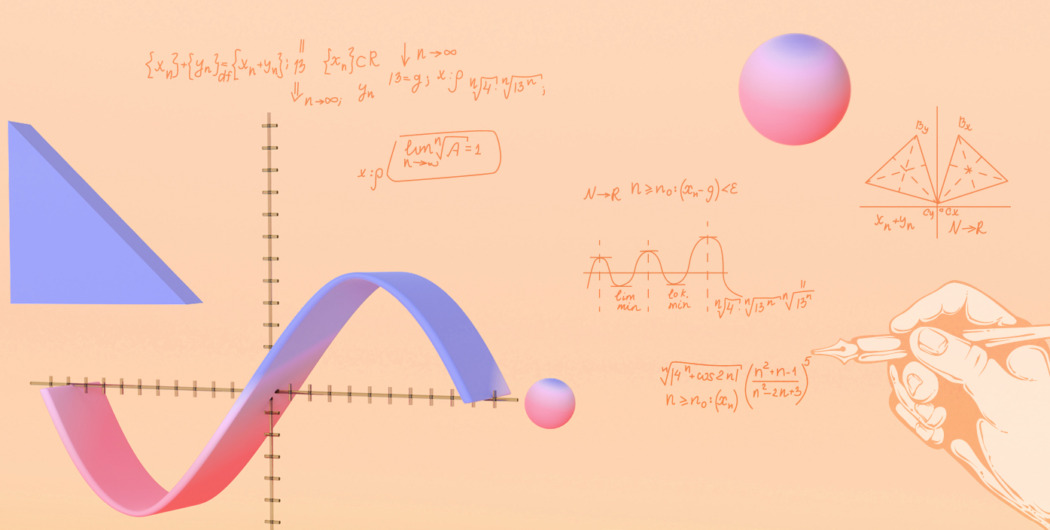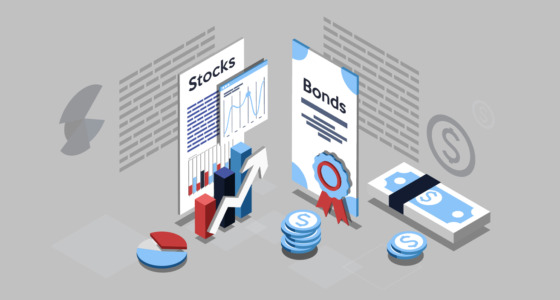

Most traders tend to overlook some simple calculations that could significantly improve their trading. So, here’s the easy math guide for traders.
We’ve simplified all essential trading calculations, for all traders – beginners and expert traders alike. Regardless of the asset you trade – crypto, Forex, stocks, indices, or ETFs – you’ll encounter some common calculations that you must factor into your trading. This article discusses the easy math guide for traders, including the value of pips, leverage, and margin, position sizing, drawdown, trade expectancy, and risk-reward ratio.
Margin
Margin is sometimes mistakenly referred to as leverage. Leverage is a credit facility extended to you by your broker or exchange, which helps you increase your exposure to a particular asset. For example, if you take leverage of 100:1, you will open a position that is 100x the size of your account deposit. Say you have a $1000 deposit in your account. With leverage of 100:1, you can open a position worth $100,000.
Margin is the minimum deposit required to open and maintain a leveraged position. This means that your margin entirely depends on the leverage.
Margin = Trade Size In $ / Leverage
Spread
The spread usually applies when trading CFDs. It’s the difference between the bid price and the ask price and is commonly referred to as the bid/ask spread. The bid price is the price that your broker/exchange will demand when you buy a currency pair, while the ask price is the price that you receive when you sell a currency pair.
Spread = Ask price – Bid price
Note that the spread is often considered a cost to the trader.
Position sizing
Position sizing should be the first thing any trader does. As the name suggests, it shows the size of the position you should open, depending on the risk you are comfortable taking. These are the four figures you’ll need to compute a trade’s position sizing:
- Account size
- The risk you are willing to take per trade (you decide this arbitrarily)
- Amount at risk = risk * Account size
- The entry price
- The intended stop loss price
And here’s the position sizing formula in crypto:
Position sizing = Position Size for long positions (# of Coins) = Amount at Risk / (Entry Price – Stop Loss Price)
When calculating the position sizing for Forex, you’ll have to factor in the pip value of the asset you’re trading.

Pip value
Changes in tradable assets are measured in pips. They represent a measure of the smallest change possible in a tradable asset. Typically, how pips are calculated depends on how the tradable asset is quoted. The pip value can be calculated and expressed in different currencies, the base or the quoted currency, or the account currency.
In Forex, value of 1 pip = (0.0001 / Current Exchange Rate) * Trade Size
In crypto trading, value of 1 pip = (Cryptocurrency Units per 1 Lot * Position Volume) / 1Cryptocurrency Decimals
Maximum drawdown
It’s only natural to have losing trades, which makes risk management all the more important. But how do you measure the risk you’ll be taking? This is where maximum drawdown comes in.
Maximum drawdown (MDD) is a measure of an asset’s largest price drop from a peak to a trough. MDD measures the drop in the value of an investment (or a single trade) from its lowest trough and the highest peak before the trough. Statistically, this is an accurate way of measuring historical volatility and can be used to inform the downside of a particular investment, or trade.
MDD = (Peak value before largest drop – Lowest value before new high established) / (Peak value before largest drop)
As a risk management measure, you should opt for strategies that have the lowest possible maximum drawdown. That’s because they allow you to withstand a period of losing streaks, without blowing up your account, or significantly impacting your capital.
Trade expectancy
Trade expectancy calculates the expected average win or loss per trade and can help gauge your long-term yield. To calculate it, you’ll need the following data:
- Win rate and loss rate
- Risk per trade
- Risk-reward ratio
- Account size
Here’s the formula:
Trade expectancy = {Win rate*(Account Size * %-Risk * Risk-Reward)} – {Loss Rate*(Account Size * %Risk)}
Risk reward ratio
The risk-reward ratio calculates the amount of money you’re willing to lose to make a given amount of profit in a single trade. Here, the risk is the difference, in pips, between the entry price and the stop loss, which represents the amount you’re willing to lose. And the reward is the difference, in pips, between the entry price and the profit target.
Risk-reward ratio = (Stop loss – entry) / (profit target – entry)
Expectancy of your system
The expectancy of the system is a very important metric that traders should take into account. More specifically, this formula can be used to calculate whether the system can make a profit or not.
The metric goes like this:
– Expectancy = Winrate*(Account Size * %-Risk * Risk:Reward) – Loss Rate*(Account Size * %-Risk)
There are two steps in an expectancy formula. One deals with the winning trade’s expected return, and the other with a losing trade’s average loss.
– Expected Profit Of A Winning Trade = Winrate * (Account Size * %-Risk * Risk:Reward)
– Expected Loss Of A Losing Trade = Loss Rate* (Account Size * %-Risk)
Likelihood of losing and winning streaks
Not all traders calculate the likelihood of losing and winning streaks, and this can have consequences. It’s not difficult to calculate how likely it is to have winning and losing streaks. All you need is the loss rate and winrate statistics.
Here’s how the formula would go with a loss rate of 40% and a winrate of 60%:
– 2 Winners In A Row = Winrate * Winrate
o 60% * 60% = 0.6 * 0.6 = 0.36 = 36%
– 4 Winners In A Row = Winrate * Winrate * Winrate * Winrate
o 60% * 60% * 60% * 60% = 13%
If math formulas are not your strongest quality, there are streak calculators that can make the process easier.
Profitability check
Finding out whether a trade would be profitable or not in the long term is possible if you do some calculations beforehand. To tell whether a trade would generate profits or not, you need your past winrate, take profit distance, and stop loss distance.
Doing a profitability check is not too complicated. Here’s a formula you can use to calculate profitability:
– Risk:Reward Ratio = Take Profit Distance / Stop Loss Distance
In this case, let’s say that the stop loss distance is 40 pips, the winrate is 60%, and the take profit distance is 65 pips. Using the formula above, you would do the following:
– 65 / 40 = 1,625
Then, you continue the formula like this:
– Required Winrate = 1/ (1 + Risk:Reward Ratio)
– 1 /(1 + 1,625) = 0.38 = 38%
The required winrate, in this case, is 38%. Considering it is lower than the past winrate, it tells you that you can make the desired trade without worrying about risks.
The metric is extremely useful and can contribute greatly to your trading strategy.
What do correlations mean for your trading?
Whenever you do trades, your risk can be influenced by correlations.
For instance, if you purchase or sell two stocks and the correlation is negative, your risk drops because the stocks move in separate ways. Then, when a stock manages to rise, the other stock will drop, resulting in some hedge.
Meanwhile, if the stocks have a positive correlation, the risk grows as the stocks drop and rise together.
Discovering the correlation between stocks is not complicated. A correlation calculator form can be used in this case.
Conclusion
There are hundreds of trading calculations that traders may need to factor into their daily trading decisions. While we’ve reviewed the most common ones you’ll need, most trading platforms usually have automated trading calculators that will do the work for you.










